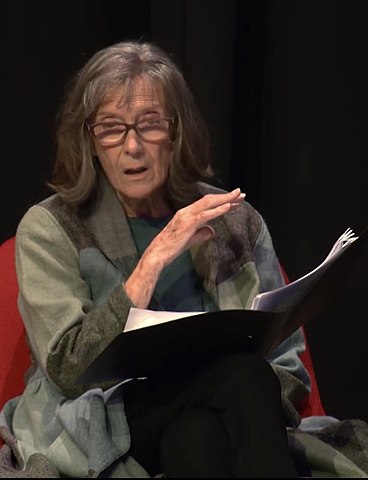Last month, I wrote this blog post about the fascinating unsolved case of Hazel Drew and how it inspired The Case of the Dead Domestic, Book 6 of my Adele Gossling Mysteries.
It turns out my book wasn’t the only creative endeavor inspired by the Hazel Drew case. A more unexpected connection exists between a cult classic TV show that aired in 1990 and this unsolved crime that occurred back in 1908.

Photo credit: Photo of co-creator David Lynch and actor Kyle MacLachlan at the premiere of Season 3 of Twin Peaks, 21 May 2017, Ace Hotel, Los Angeles, CA: Esprus4/Wikimedia Commons/CC BY SA 3.0
I remember the huge success of Twin Peaks back in the early 1990s, though I never saw the series myself. But there was something fascinating about a beautiful blond teenager found floating in a lake in a small town and the psychologically complex story that unfolds for the detective sent to solve her murder. If some of these elements sound familiar, it’s because they are. The Hazel Drew case unfolded in much the same way — with the body of a lovely young woman found dead in a lake near a small town.
Mark Frost, the co-creator of the series, came onto the story of Hazel Drew in a much more organic way than I did. As a boy, he used to spend summers with his grandmother near the Taborton area where Hazel Drew’s murder took place. He heard of Drew not as a murder victim but as a ghost. His grandmother used to entertain him and his younger brother by telling them ghost stories about the ghost of Hazel Drew who still roamed Teal Pond, using it as a cautionary tale for the boys not to go wandering in the isolated area at night.
The story seems to have gone the way that most childhood ghost stories do until the adult Frost was brainstorming ideas for a TV series with David Lynch in an L.A. coffee shop. They suddenly had a vision of a beautiful blond girl found floating face down in a lake. This brought to Frost’s mind the stories he had heard as a child about Hazel Drew and thus, the character of Laura Palmer was born. Frost’s further investigations into the Hazel Drew case led to the plot of the series that was such a hit thirty years ago.
My fascination with the Hazel Drew case came from factors other than Twin Peaks. First, it’s an unsolved crime (in spite of recent theories about who might have killed her) and thus, Hazel Drew’s death hasn’t yet been avenged, which suits my protagonist Adele Gossling perfectly, since her purpose in solving crimes is to make sure women, dead or alive, receive justice. Second, it’s a classic crime that occurred at the turn of the 20th century, which feeds my love for the era. And third, the murder victim was as complex as the murder itself (which I talk more about in my blog post on the case).
Book 6 of the series has just been released, so you can get it here.
If you love fun, engaging mysteries set in the past, you’ll enjoy The Missing Ruby Necklace! It’s available exclusively to newsletter subscribers here. By signing up, you’ll also get news about upcoming releases, fun facts about women’s history, classic true-crime tidbits, and more!







